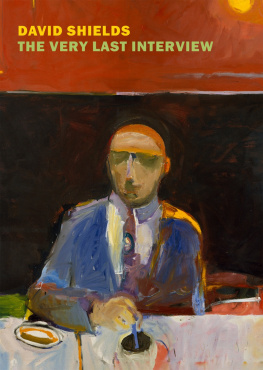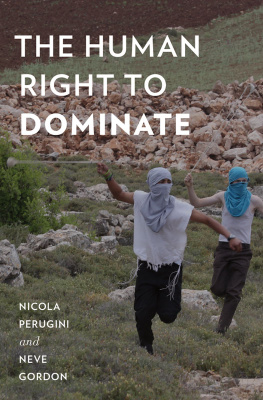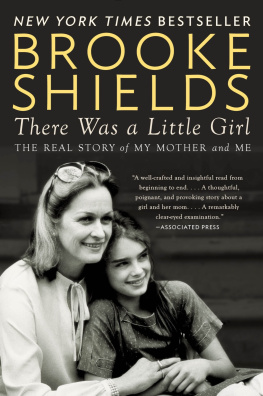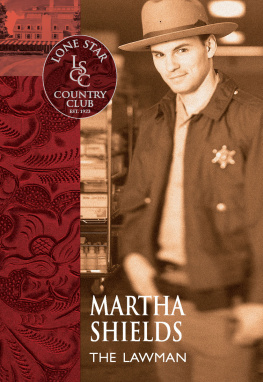Named in remembrance of the onetime Antioch Review editor and longtime Bay Area resident,
the Lawrence Grauman, Jr. Fund
supports books that address a wide range of human rights, free speech, and social justice issues.
The publisher and the University of California Press Foundation gratefully acknowledge the generous support of the Lawrence Grauman, Jr. Fund.
Human Shields
A HISTORY OF PEOPLE IN THE LINE OF FIRE
Neve Gordon and Nicola Perugini

UNIVERSITY OF CALIFORNIA PRESS
University of California Press
Oakland, California
2020 by Neve Gordon and Nicola Perugini
Cataloging-in-Publication Data is on file at the Library of Congress.
ISBN 978-0-520-30184-9 (cloth : alk. paper)
ISBN 978-0-520-97228-5 (ebook)
Manufactured in the United States of America
28 27 26 25 24 23 22 21 20
10 9 8 7 6 5 4 3 2 1
The goumiers [Muslim soldiers in the French colonies], said Pierre Lyautey, are incorrigible. They cant accustom themselves to modern civilization. Even booby-traps are part of modem civilization.
Throughout North Africa, said Jack, the natives got used to American civilization straight away. Its an undeniable fact that since we landed in Africa the peoples of Morocco, Algeria and Tunisia have made great progress.
What sort of progress? asked Pierre Lyautey in amazement.
Before the American landing, said Jack, the Arab used to go about on horseback while his wife followed him on foot, walking behind the horses tail with her child on her back and a large bundle balanced on her head. Since the Americans landed in North Africa things have altered profoundly. The Arab, it is true, still goes on horseback, and his wife continues to accompany him on foot as before, with her child on her back and a bundle on her head. But she no longer walks behind the horses tail. She now walks in front of the horsebecause, of the mines.
CURZIO MALAPARTE , The Skin, 1949
CONTENTS
Humane Warfare in the United States
The Franco-German War and the Legal Use of Human Shields
The Second Boer War and the Limits of Liberal Humanitarianism
World War I and the German use of Human Screens
International Pacifism and Voluntary Shielding during the Sino-Japanese War
The Italo-Ethiopian War and Red Cross Medical Facilities
Nazi Human Shielding and the Lack of Civilian Protections
The Geneva Conventions and the Passive Civilian
Casting Vietnamese Resistance as Human Shielding
Green Human Shielding
Antimilitary Activism in Iraq and Palestine
The International Criminal Tribunal for the Former Yugoslavia
Military Handbooks as Lawmaking Tools
Human Shielding in Sri Lanka and the Principle of Proportionality
The Use of Medical Facilities as Shields
Civilians Trapped in the Midst of the War on ISIS
The Gaza Wars and Social Media
Drone Warfare and New Surveillance Technologies
Gender, Passivity, and Human Shields
Viral Images That Dehumanize or Humanize Shields
Human Shields in Virtual Wars
Civil Disobedience as an Act of War
ILLUSTRATIONS
Introduction
AS PART OF HER SENIOR - YEAR PROJECT at Evergreen College, twenty-three-year-old Rachel Corrie traveled to the Middle East, intending to initiate a sister city project between her hometown Olympia, Washington, and the Palestinian town Rafah, in the Gaza Strip. She flew into the area at the very height of the second Palestinian uprising, and after a two-day seminar in the offices of the International Solidarity Movement (ISM) in the West Bank, she continued on to Rafah to join other ISM activists who were trying to prevent Israels massive demolitions of houses on the Egyptian border. Less than two months after her arrival, on March 16, 2003, Corrie was crushed to death as she tried to prevent an Israeli Caterpillar D9R military bulldozer from destroying the home of local pharmacist Samir Nasrallah.
During the subsequent trial, the military spokeswoman defended the bulldozer driver and accused the ISM of carrying out illegal and violent activities by serving as human shields for wanted people or for the homes of Palestinians. In the militarys eyes, the fact that Corrie had used her body as a shield to try to deter bulldozers from demolishing homes was proof that she had engaged in an act of combat, and thus the person who killed her had not violated any law. Rachel Corries horrific death and the acquittal of the soldier who killed her pose a number of questions around human shielding. Why was the killing of a voluntary human shield, an unarmed person who deploys nonviolent forms of protection, deemed legal? Why are voluntary human shields considered criminals by some and heroes by others? And what might a history of people in the line of fire teach us about the laws of war and the changing political and social forces that have shaped the global order?
The phrase human shield actually emerged only following the Second World War, even though the practice of human shielding had been common for a very long time. In the seventh century, for example, the Chinese used barbarian tribes on the Turko-Mongol frontier as human buffers, while the Mongols deployed prisoners as shields during their conquests. Unlike Rachel Corrie, these were involuntary human shields, people who were coerced to serve as a buffer, and a careful reading of the historical records revealed that their use was not uncommon.
The practice of human shielding also appears in many notable novels, memoirs, poems, and films, but since its not explicitly mentioned, its easy to miss. Human shielding occurs in one of the key scenes in Harper Lees novel To Kill a Mockingbird, for example. Set in a southern United States town in the early 1930s, the story follows the lives of two children and their lawyer father, Atticus Finch, who is charged with defending Tom Robinson, a black man wrongfully accused of raping and beating a white woman. The night before the trial, Robinson is brought back to the local jail, and Atticus, who thinks that some of his white neighbors might want to murder the prisoner, decides to sit in front of the jailhouse to protect his client with his own body. Sure enough, an angry mob of men arrive and demand that Atticus move aside so that they can carry out the lynching, but his two children and another boy suddenly appear, and by standing on the steps of the jailhouse, unwilling to budge, the lawyer and the three children manage to fend off the would-be killers (figure 1).
FIGURE 1. In To Kill a Mockingbird, Atticus Finch and the children shielding Tom Robinson from an angry mob. Credit: YouTube clip.
This scene pre-dates the activities of the International Solidarity Movement in Gaza, but it too depicts an action that today we would call voluntary human shielding, where a person or group of people risks their lives to protect someone or something that is under attack. It is a nonviolent act of resistance not only against the deployment of violence but, as Lees novel suggests, also against oppressive social normsin this case the white supremacy that dominated the southern US town. This is but one of many instances of voluntary shields who challenged militarism, imperialism, racism, sexism, capitalist exploitation, and environmental plunder. Such people willingly put their lives in the line of fire to advance a cause they perceive as ethical.








![Neve Gordon [Unknown] - Israel’s Occupation](/uploads/posts/book/114467/thumbs/neve-gordon-unknown-israel-s-occupation.jpg)





